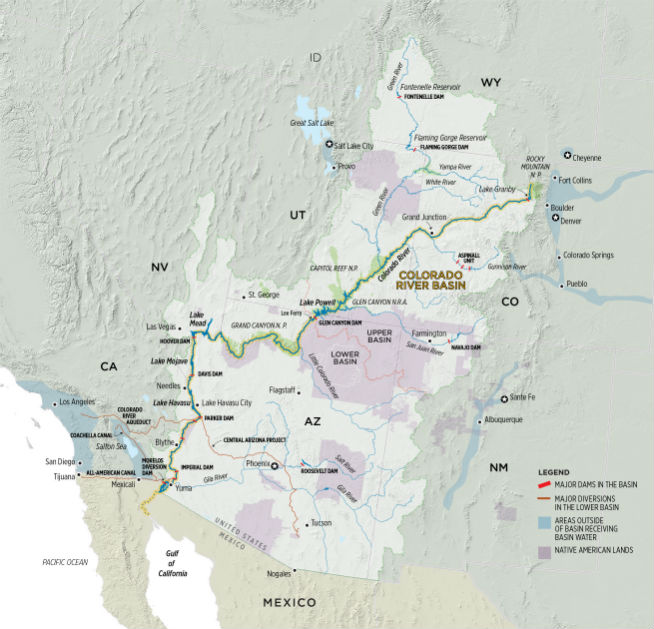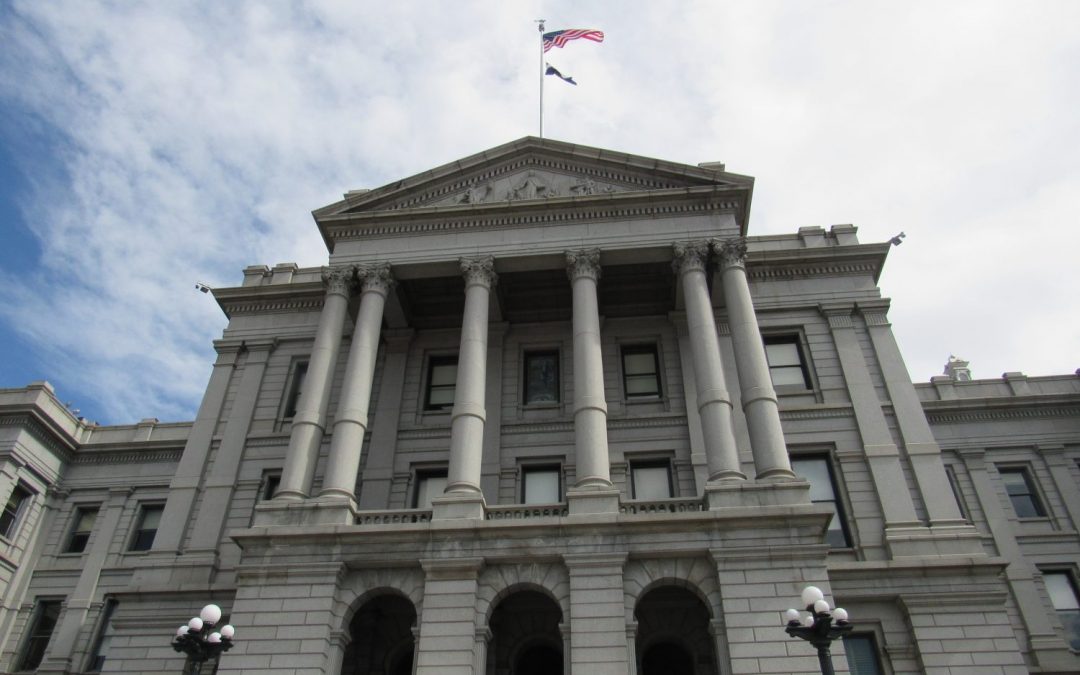Colorado lawmakers, citing lower revenue forecasts and competing needs, have dramatically reduced proposed funding for the Colorado Water Plan and Colorado River drought work, providing roughly one-third of what Gov. Jared Polis had requested in his budget for this year.
Earlier this year, the Colorado Water Conservation Board (CWCB), the agency charged with overseeing the state water plan and developing the Colorado River drought contingency plan, said it would have $30 million to work with as a result of the governor’s request. Of that, $20 million would be used to pursue work on an historic, multi-year initiative to find ways to re-operate reservoirs and voluntarily cut back water use to relieve pressure on the drought-stricken Colorado River. The rest would go toward grants to fund entities across the state who are working to implement the Colorado Water Plan.
But lawmakers aren’t required to honor all budget requests from governors, and late last week Joint Budget Committee (JBC) members said they would provide just $10 million.
That appropriation leaves intact the $1.7 million the CWCB had budgeted this year to do public outreach and technical studies for the drought contingency plan.
The rest, $8.3 million, will be used to fund water plan grants over the next three years and comes in addition to the annual funding toward water plan implementation that the CWCB has been providing from its existing budget.
Even with the reduction, state officials said they are pleased that, for the first time since it was finalized in 2015, general fund money is being dedicated to the water plan.
Gov. Polis’ office said the new general fund allocation is an important step forward.
“There is always more work to do, but we are excited the JBC has provided unprecedented general funds to make progress toward the state’s water plan,” the office said in a statement.
Rebecca Mitchell, director of the CWCB, said the reduction in funds is manageable. “The $1.7 million we had expected for this year is still there. And we have $8.3 million for the water plan. With that, we feel like we can still move forward. We understand there are a lot of needs out there. We’ll work on finding the rest of the money [for the drought contingency plan] later.”
Last week, the CWCB formally approved the drought contingency plan effort and expects to begin recruiting people to serve on several public drought work groups this week.
The budget action comes during a critical period in the Colorado River Basin. Last week, after several failed attempts, all seven states that share the river for the first time agreed to implement a basin-wide drought plan in an effort to shore up lakes Powell and Mead, which are less than half full and in danger of reaching critical thresholds that would trigger cutbacks.

Colorado’s effort is part of that basin-wide initiative. Though this year’s snows have given some relief, the snow won’t bring the reservoirs out of crisis mode, according to forecasts from the U.S. Bureau of Reclamation.
The river is critical to Colorado’s water supply, with roughly half of the supplies for the Denver metro area coming from its annual flows and even larger amounts fueling the state’s farms.
State water leaders have been pleading with the state to move quickly on the drought contingency plan to insure there is some protection should Colorado and its neighboring states in the Upper Colorado River Basin be unable to meet legal obligations to deliver water to Arizona, California and Nevada.
This year’s task is to determine if there is an equitable way to cut back on water use, where and how those cut backs would occur, how to measure the reductions, and how to protect the environment, local economies and the legal rights of water users while the drought plan is in effect. Up to 500,000 acre-feet of the water saved through such efforts, known as demand management, could be stored in Lake Powell via the new seven-state drought agreement.
Despite the need for action, Andy Mueller, general manager of the Glenwood Springs-based Colorado River Water Conservation District, said the enormity of crafting a statewide demand management plan requires that the state be prudent in its data gathering and analysis.
“If you do the math on voluntary, compensated demand management, you know it will cost tens of millions of dollars a year to run. That is a frightening concept, but in a complex situation like this, where there are so many multifaceted components, you have to plan.”
Financing water projects in Colorado has rarely been easy, particularly in small, rural communities or when there is no clear connection to taxpayers. After finalizing the Colorado Water Plan in 2015, officials estimated the state would need roughly $100 million a year to fully fund it and help close the gap on water shortages the state is likely to face as soon as 2030.
Four years later, though, little progress has been made on securing a permanent funding source, although several nonprofits, such as the Walton Family Foundation, together with the state’s Interbasin Compact Committee (IBCC) are exploring funding options, including a possible ballot initiative in coming years. The IBCC represents the state’s eight major river basins plus the metro area and was involved in the Colorado Water Plan’s development. (Editor’s note: The Walton Family Foundation is a funder of Fresh Water News).
What the current funding reductions mean for the drought work and the state water plan isn’t clear. Joint Budget Committee Chair Dominick Moreno, D-Commerce City, could not be reached for comment.
The full legislature is examining the state’s draft budget this week and additional changes may occur.
But Tom Dermody, a Joint Budget Committee analyst working on the issue, said there were too many competing demands this year to provide the full $30 million up front. Among those are full-day kindergarten for all Colorado schools and health care.
“Joint Budget Committee members indicated their willingness to consider future funding. They recognize the need,” Dermody said. “But any expectations [for additional funding] need to be tempered with the understanding that the budget is based on revenue forecasts. Until we have the forecasts each year, we can’t say what will be available.”
Jerd Smith is editor of Fresh Water News. She can be reached at 720-398-6474, via email at jerd@wateredco.org or @jerd_smith.
Fresh Water News is an independent, non-partisan news initiative of Water Education Colorado, watereducationcolorado.org. WEco is funded by multiple donors. Our editorial policy and donor list can be viewed here.


 Print
Print